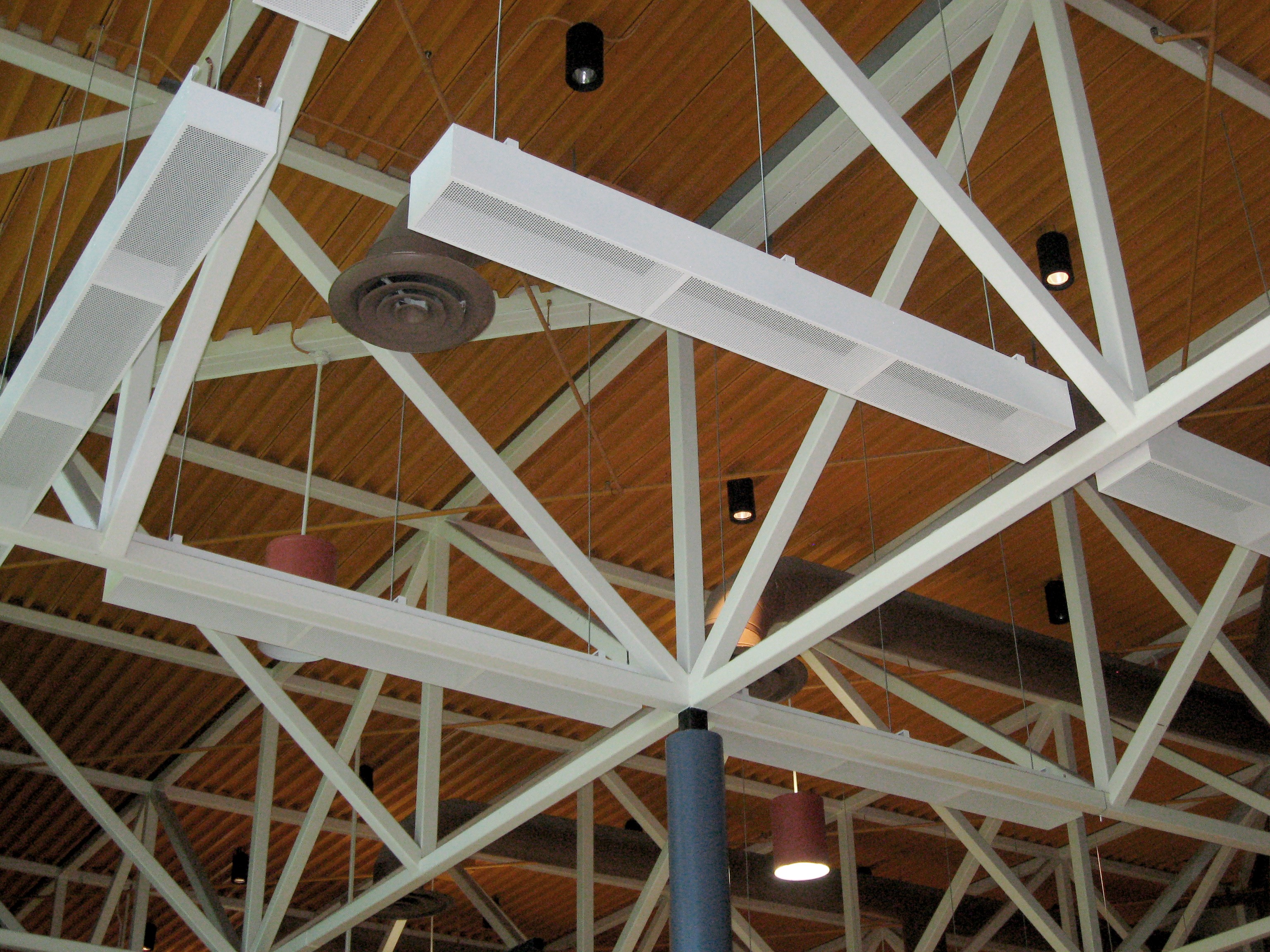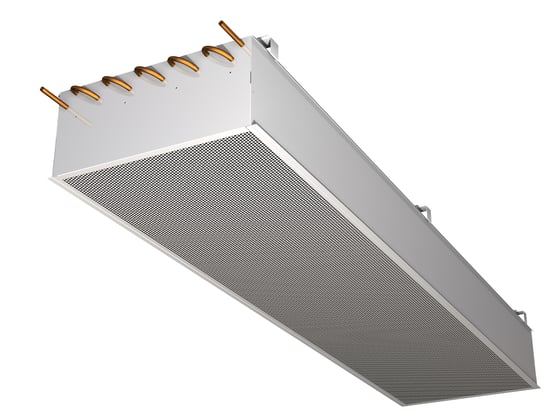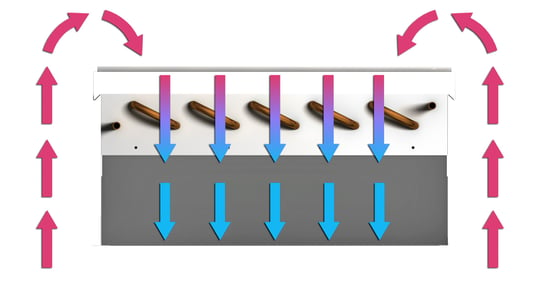Using Natural Convection to Provide Energy-Efficient Comfort
Chilled beam technology is often separated into two categories: active and passive. As we explored in a previous blog post, active chilled beams take in primary air from an air handler, which is then pressurized and released through a series of nozzles. Passive chilled beams, however, do not have any supply air ducted to them and operate utilizing natural convection. This energy-efficient cooling device is often coupled with other air systems such as underfloor air, displacement ventilation and active chilled beams.
 |
| Price’s Linear Passive Beams installed in an open-ceiling application |
The basic components of passive beams include a water coil, a frame or shroud, and a face. These components help maximize the efficiency of natural convection.
 |
| A passive chilled beam with its coil, frame and perforated face |
Natural convection is a fluid flow produced by two separate fluid densities where one is heavier than the other. The passive chilled beam achieves this by bringing in water (with a temperature around 57°F) that is colder than that of the surrounding air (around 75°F), which therefore makes the air around the coil denser. This makes this cold air sink, draws the warmer and lighter air above it down through the water coil and cools it off.
The steps of the natural convection process include the following:
- Air around the water coil is cooled.
- The cooled air falls toward the floor.
- As it sinks to the ground, the falling air absorbs the heat around it.
- Having absorbed this heat, the new air becomes warmer than the existing air around it.
- This new air rises back to the water coil, and the process repeats.
 |
| Airflow of a passive beam in cooling |
A passive chilled beam is an air-conditioning system that relies on the heat transfer efficiency of water and the fluid dynamics principle of buoyancy to drive natural convection. This product is one of the most energy efficient systems as it does not have nor require any moving parts. A passive beam system effectively provides cooling to a space without adding to building fan energy usage – all while promoting a high level of occupant comfort and energy efficiency.
To learn more about passive beams and how they can work in your next project, contact us at beamteam@priceindustries.com.



